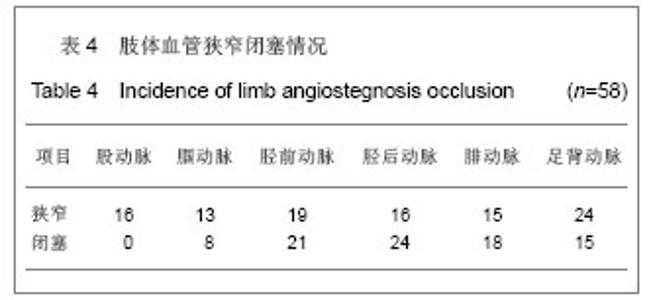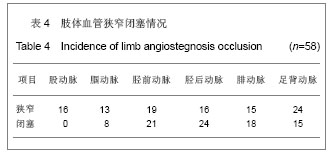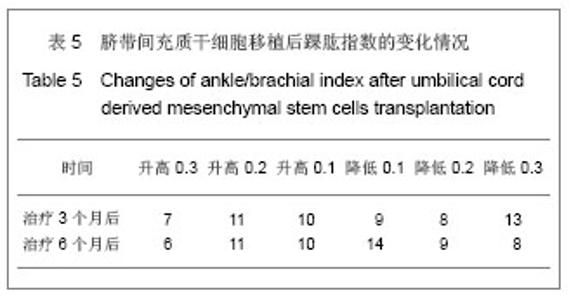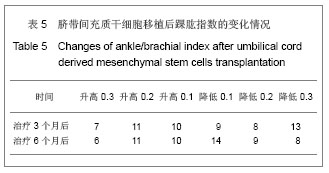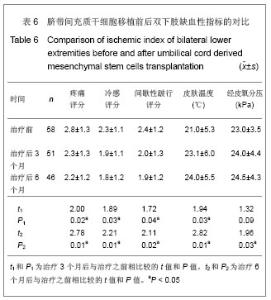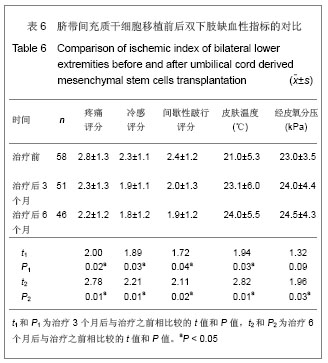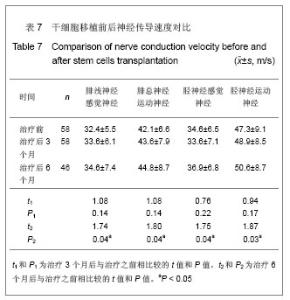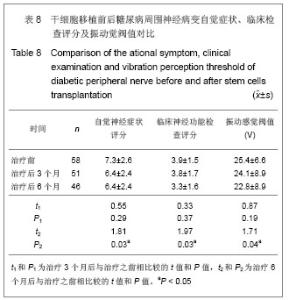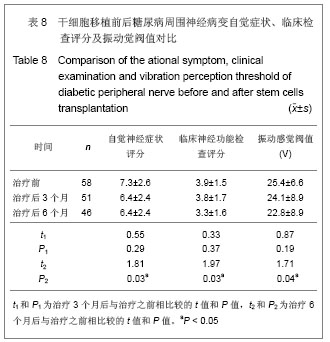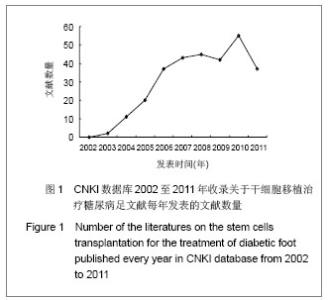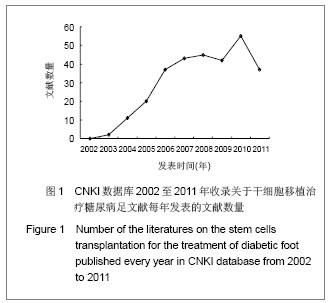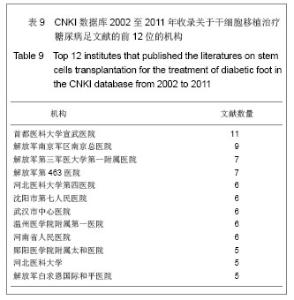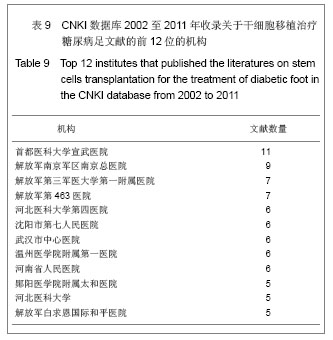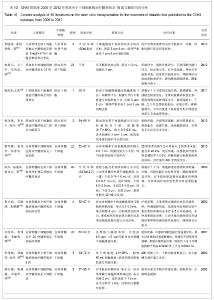| [1] Wang S, Li Y, Zhao J, et al. Mesenchymal stem cells ameliorate podocyte injury and proteinuria in a type 1 diabetic nephropathy rat model. Biol Blood Marrow Transplant. 2013.[2] Wan JB, Cai Q, Liu Y. Effect of intramuscular bone marrow-derived mesenchymal stem cell transplantation in the leg for treatment of diabetic foot ulcers in rats. Nan Fang Yi Ke Da Xue Xue Bao. 2012;32(12):1730-1736.[3] Drela E, Stankowska K, Kulwas A, et al. Endothelial progenitor cells in diabetic foot syndrome. Adv Clin Exp Med. 2012;21(2):249-254.[4] Jackson WM, Nesti LJ, Tuan RS. Concise review: clinical translation of wound healing therapies based on mesenchymal stem cells. Stem Cells Transl Med. 2012;1(1):44-50.[5] Weck M, Slesaczeck T, Rietzsch H, et al. Noninvasive management of the diabetic foot with critical limb ischemia: current options and future perspectives. Ther Adv Endocrinol Metab. 2011;2(6):247-255.[6] Hou C, Shen L, Huang Q, et al. The effect of heme oxygenase-1 complexed with collagen on MSC performance in the treatment of diabetic ischemic ulcer. Biomaterials. 2013;34(1):112-120.[7] Shen L, Zeng W, Wu YX, et al. Neurotrophin-3 accelerates wound healing in diabetic mice by promoting a paracrine response in mesenchymal stem cells. Cell Transplant. 2012. [8] Gu YQ,Zhang J,Guo LR,et al. Zhongguo Linchuang Kangfu. 2004;8(35):7970-7972.谷涌泉,张建,郭连瑞,等.自体骨髓干细胞移植治疗下肢严重缺血:32例报告[J].中国临床康复,2004,8(35):7970-7972.[9] Yang XF, Wu YY, Wang HM, et al. Zhonghua Neike Zazhi. 2005;44(2):95-98.杨晓凤,吴雁翔,王红梅,等.自体外周血干细胞移植治疗62例缺血性下肢血管病的临床研究[J].中华内科杂志,2005,44(2): 95-98.[10] Zhu LY, Wang GY, Ma LC, et al. Zhongguo Zuzhi Gongcheng Yanjiu. 2012;16(1):175-178. 朱旅云,王广宇,马利成,等.脐血单个核细胞移植治疗糖尿病足23例[J].中国组织工程研究,2012,16(1):175-178.[11] Wang GY, Zhu LY, Hou RR,et al. Zhongguo Zuzhi Gongcheng Yanjiu yu Linchuang Kangfu.2011;15(14): 2508- 2511.王广宇,朱旅云,厚荣荣,等.自体骨髓单个核细胞移植治疗糖尿病性下肢缺血83例[J].中国组织工程研究与临床康复,2011, 15(14): 2508-2511.[12] Li XY, Guo J, Li H, et al. Neimenggu Zhongyiyao. 2012;31(20): 1-2.李晓燕,郭剑,李辉,等.人脐带间充质干细胞移植治疗糖尿病足患者TregTh17Th1细胞亚群的表达变化[J].内蒙古中医药,2012, 31(20):1-2.[13] Yang SY, Wang L, Zhongwai Yixue Yanjiu. 2011;9(30):69.杨尚英,王莉.1例脐带血干细胞移植治疗糖尿病足的护理体会[J].中外医学研究,2011,9(30):69.[14] Yang HQ, Li DS, Du L, et al. Zhongguo Zonghe Linchuang. 2010;26(9):918-920.杨华强,李东升,杜玲,等.脐血间充质干细胞移植治疗糖尿病足二例并文献复习[J].中国综合临床,2010,26(9):918-920.[15] Li YH, Jiang MH, Yang XL, et al. Qingdao Yiyao Weisheng. 2010;42(06):416-417.黎英豪,姜茂华,杨孝良,等.自体骨髓造血干细胞局部注射治疗糖尿病足三级创面[J].青岛医药卫生,2010,42(06):416-417.[16] Chen B, Lu DB, Liang ZW, et al. Zhongguo Zuzhi Gongcheng Yanjiu yu Linchuang Kangfu. 2009;13(32):6227-6230.陈兵,陆德宾,梁自文,等.自体骨髓间充质干细胞体外扩增后移植治疗糖尿病足[J].中国组织工程研究与临床康复,2009,13(32): 6227-6230.[17] Xia HJ, Su XQ, Zhang YW. Shiyan yu Jianyan Yixue. 2009; 27(3):235-237.夏洪娇,苏晓清,张雅薇.人自体骨髓干细胞移植治疗糖尿病足的临床应用[J].实验与检验医学,2009,27(3):235-237.[18] Liu XL, Li WJ, Xiang XX, et al. Zhongguo Zonghe Linchuang. 2007;23(5):420-421.刘秀玲,李伟娟,项岫秀,等.自体骨髓干细胞移植治疗20例糖尿病足的临床观察[J].中国综合临床,2007,23(5):420-421.[19] Li Wj, Xiang XX, Yu F, et al. Linchuang Huicui. 2006;21(20): 1467-1467.李伟娟,项岫秀,俞芳,等.自体骨髓干细胞移植治疗糖尿病足3例[J].临床荟萃,2006,21(20):1467-1467.[20] Hu QD, Zhang JD, Deng JH, et al. Guangxi Zhongyi Xueyuan Xuebao. 2006;9(03):31-32.胡全穗,张建德,邓建华,等.自体骨髓干细胞移植治疗糖尿病足3例报道[J].广西中医学院学报,2006,9(3):31-32.[21] Wu KH, Mo XM, Sun J, et al. Zhonghua Xiongxin Xueguan Waike Zazhi. 2011;27(9):553-555.武开宏,莫绪明,孙剑,等.脐带间充质干细胞分化为内皮细胞促进血管新生[J].中华胸心血管外科杂志,2011,27(9):553-555.[22] Wang GY, Zhao F, Hou RR, et al. Zhongguo Zuzhi Gongcheng Yanjiu yu Linchuang Kangfu. 2011;15(10):1745-1751.王广宇,赵芳,厚荣荣,等.体外诱导人脐带间充质干细胞分化为许旺细胞[J].中国组织工程研究与临床康复,2011,15(10): 1745-1751.[23] Akita S, Yoshimoto H, Akino K, et al. Early experiences with stem cells in treating chronic wounds. Clin Plast Surg. 2012;39(3):281-292.[24] Lian M,Feng XY,Cui BL,et al.Induction of human umbilical cord blood mesenchymal stem cells into nerve- like cells by salviamilti orrhiza. Blood.2005;106(2):138. |
